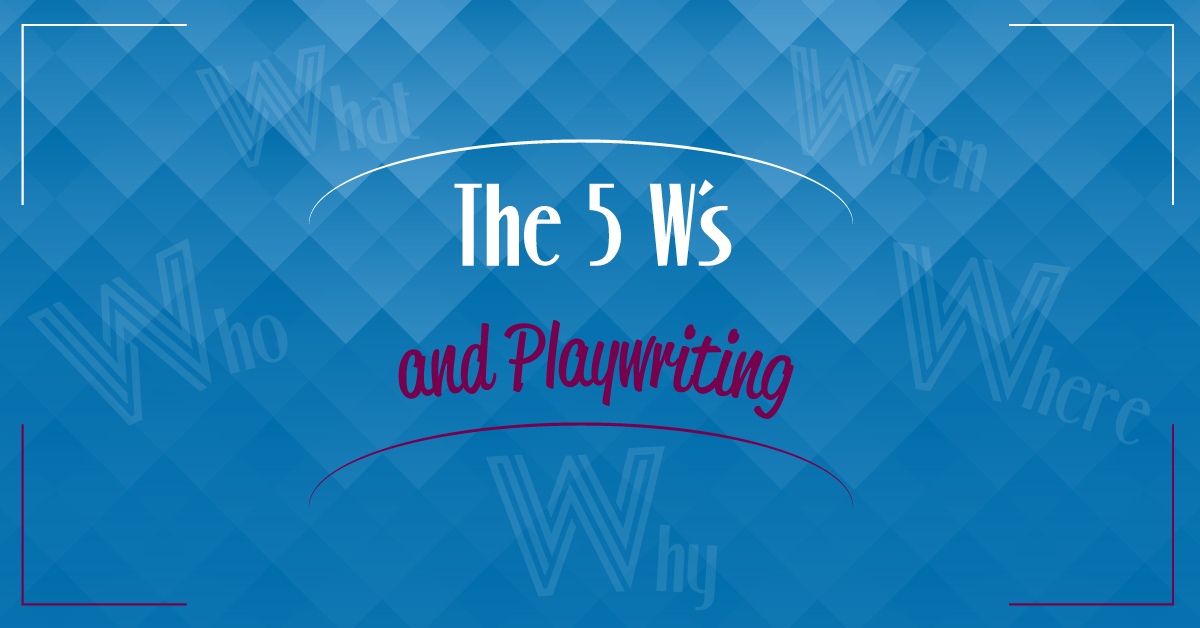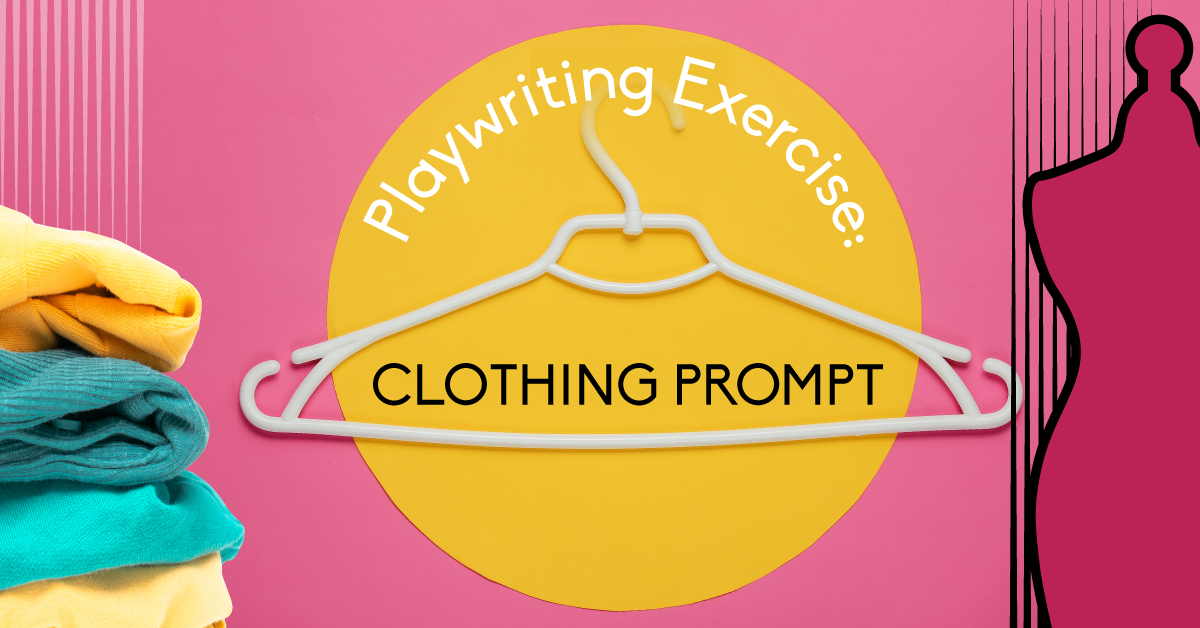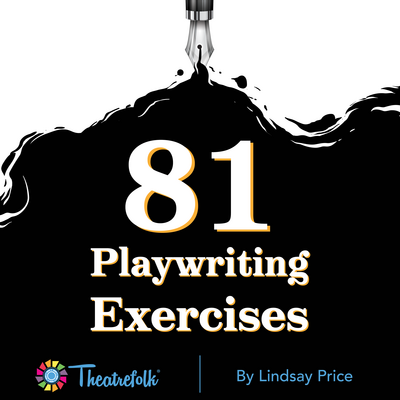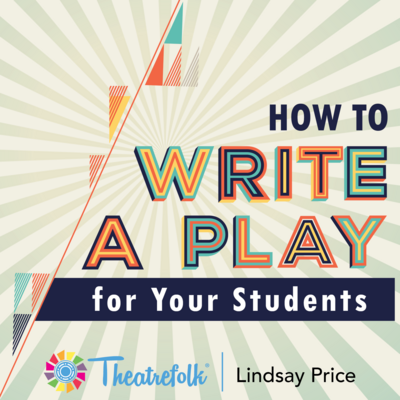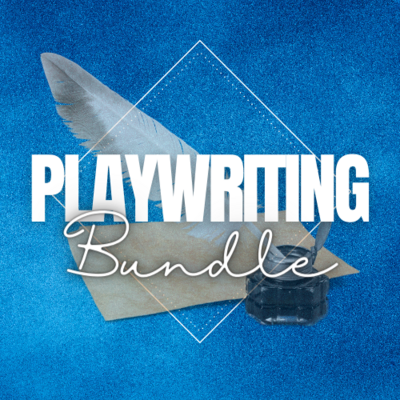Agatha Rex by Lindsay Price is a bold high school take on Antigone - packed with heart, conflict, and a powerhouse ensemble. One girl. One stand. One huge risk. *NEW COMPETITION VERSION AVAILABLE!*
The 5 W’s and Playwriting
So, you’ve decided to do some playwriting with your students. Fantastic! But now comes the hard part – actually sitting down and writing. Whether in a notebook or on a computer screen, that blank page full of promise and possibility can be incredibly daunting. Especially when you can write about literally anything! So let’s break it down and start with the basics: the 5 W’s (Who, What, Where, When and Why). Answering those questions will help students get to the “How” question (as in, “HOW in the world am I going to write a play?!”).
Teachers: If your students are feeling overwhelmed, stuck, or unsure of where to begin with their play or scene, have them answer the questions below. They can be used in any order or combination to get students’ brains working and their ideas flowing.
WHAT: What is your play going to be about?
That’s a huge question which calls for a brain dump. Have students grab a large piece of paper, set a timer for 5 minutes, and start writing down any and all ideas that come to mind. Don’t discard or edit anything, or worry about “if it’s been done before.” The point of the exercise is to churn out ideas. If an idea jumps into your brain, write it down. What are you interested in or would like to learn more about? Baseball? Root beer? Firefighting? Gardening? Stephen Sondheim? Bees? If it crosses your mind, write it down.
When the timer goes off, have students look back over the list and make some connections. How about baseball players planting a garden while bees fly around nearby? A firefighter drinking root beer with Stephen Sondheim? Eventually, one of the idea combinations will pique your interest. When it happens, start writing! Crazier things have turned into amazing plays! Seriously – think of the musical Spider-Man: Turn Off the Dark. (Why not?)
WHO: Who are you writing for?
This question could be viewed in many different ways. The first way is who are you writing for in terms of your audience. If it’s a “youth theatre” play, is it a play for elementary school students or high school students? By getting specific and deciding who the target audience is, students will get clear on the tone and content.
The second way to view this question is who are you writing for in terms of performers. Going back to the “youth theatre” play idea. Is the play going to be performed BY young actors (for example, in drama classes or as a school production), or the play going to be performed FOR a youth audience? Again, this might affect the tone of the show, the number of characters you include, or theatrical devices you employ (like audience participation).
Once students answer that question and start to map out their characters, you could go even deeper into the “who are you writing for?” question. Have students imagine what actors they’d “dream cast” in their show: “In your wildest dreams, who might you cast into your show? Idina Menzel? Christian Borle? Aaron Tveit? It’s your brainstorm and your dream cast – go wild!”
You can also think of “who are you writing for” in terms of who in the play is going to tell the story. What characters are you going to include? You might decide to write a play about a heroic police officer. But who is going to tell the story? Is it the police officer, or perhaps someone else? How interesting might it be if the play is from the perspective of the criminal that the officer apprehends, or the officer’s spouse or child?
WHEN: When does your play take place?
One of the first things a playwright decides is what year or era their show will take place in. A show set in the 1800’s will look, feel, and sound much different than a show set in 2016. But let’s get even more specific. Have students think about the following questions:
- What season or month does the play take place in? (This might determine what costumes the characters wear.)
- What day of the week? (This might determine whether the characters are at work/school or at home.)
- What time of day? (This might determine what the lights and set look like.)
- How much time passes throughout the play? For example, in the stage version of Disney’s Tarzan, Act 1 depicts Tarzan growing from infancy to childhood to age 20. The events of Act 2 take place over at least several weeks. Yet in Disney’s Peter Pan, the whole show is set in the timespan of one evening. How fast does the time need to pass to tell the story in your play?
Have students take some dialogue and try writing it in a different time period. Does it change anything if the show is set in December versus June? What if the characters are eating dinner at 6:00 pm rather than breakfast at 8:30 am? See if anything interesting occurs.
WHERE: Where does your play take place?
Have students grab a partner and two pieces of paper. At the top of the paper, have them write down a character – either one in the play you’re creating or a character you might be interested in developing (let’s use the previous suggestion of a “heroic police officer” as an example). Fold the paper down so the character’s name or title isn’t visible and pass the paper to your partner. Your partner will write down a place that a scene could take place in. For example, they could choose “Thailand,” “Calgary,” or “the boiler room.” Have them trade back the papers, then take 10 minutes to write a short scene featuring their character in whatever place their partner suggested. It’ll be interesting to see how students’ characters react in a different environment. How did the character get there? What are their thoughts on the place? How will they get back to where they need to be?
WHY: Why this story?
This is probably the most important question to ask yourself when you’re feeling stuck. Why this story? What is it about this particular piece that makes you feel so compelled to write it? What is your purpose?
- To teach?
- To entertain?
- To share a character you feel passionate about?
- To share a part of you or your story?
- To make people laugh?
- To make people think?
- To make history?
- To challenge the audience?
Whenever you’re feeling stuck or unsure, go back to the WHY of your story. Why this character? Why this time period? Why this subject matter? Why this story?
Related Articles
81 Playwriting Exercises
by Lindsay Price
81 exercises that can be used to get students in the habit of writing on a regular basis.
How to Write a Play for your Students
by Lindsay Price
You’ve chosen to write a play for your students! Where do you start?
Resource Bundle - Playwriting
Use these 4 Playwriting drama teaching resources to make playwriting possible with your students. Great for warm-ups, prompts, writer's block and more!
